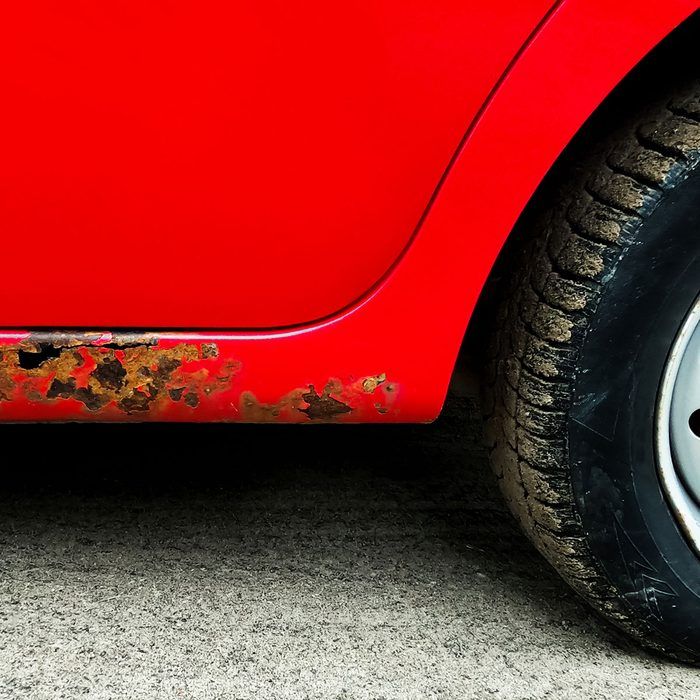Repair instructions
Easy Way to Stop Rust on a Car
Rust is one of the biggest threats to your car’s longevity and appearance. Key areas that are highly susceptible to rust include the antenna, areas beneath body moldings, and the car’s undercarriage. To stop rust from forming, it’s essential to maintain a regular car washing schedule, ensure proper drainage, and apply protective coatings like wax or ceramic finishes. Additionally, addressing paint damage, rinsing your vehicle during winter, and keeping the interior dry are effective strategies to keep rust at bay.
Which Car Parts Are Prone to Rust?
Certain car components are more vulnerable to rust, often due to exposure to the elements or their shape that collects dirt and moisture. Here are the most common rust-prone parts:
- Antenna
- Areas below body moldings and trim
- Cracks and corners
- Underbody and chassis
- Points of attachment, such as side mirrors
- Sunroof
- Wheel wells
How to Prevent Rust on Your Car
Here’s a rundown of the most effective ways to prevent rust and protect your vehicle:

1. Wash Your Car Regularly
Frequent washing is one of your best defenses against rust. While dirt itself doesn’t cause rust, it can damage your vehicle’s protective layers, including the paint and stainless steel. When these layers are compromised, corrosion sets in.
- Wash your car every two weeks, or once a week during winter months, especially in areas that use salt on the roads.
- Always use proper car wash soap—avoid household detergents, as they strip away wax and protective layers.
- Don’t forget the undercarriage, wheel wells, and hard-to-reach areas where dirt, salt, and mud tend to accumulate.
2. Keep the Drain Plugs Clear
Cars have drain plugs designed to prevent water from collecting in areas like under the doors and around the trunk. Over time, debris can clog these plugs, trapping moisture and increasing the risk of rust.
- Regularly check the drain plugs and clear any obstructions to ensure proper drainage.
3. Apply a Wax or Ceramic Coating
Adding a protective layer of wax or ceramic coating creates a barrier against corrosion. Wax provides protection from minor scratches, UV rays, and environmental contaminants, while ceramic coatings offer long-lasting protection that bonds to your paint.
- Apply a fresh coat of wax every 6 months to maintain protection.
- For longer-lasting results, consider a ceramic coating, which requires less maintenance and can last for years depending on climate conditions.
4. Use Rust Prevention Kits
If you’re working on restoring or replacing parts like subframes or axles, consider using a rust prevention kit. These kits form a durable, non-porous surface that shields metal components from water, salt, and other corrosive materials.
5. Repaint Your Car
Your car’s paint job does more than just improve its appearance—it acts as the first line of defense against rust by preventing metal exposure. Over time, however, the paint and clear coat can deteriorate due to minor bumps or environmental factors.
- If you notice paint damage, address it promptly by taking your car to a professional body shop for touch-ups. A fresh layer of paint will help protect against corrosion.
6. Rinse Your Car After Winter Drives
During winter, roads are often treated with de-icing salt to prevent ice buildup. While effective for road safety, the salt can cling to your car’s surface and promote rust formation.
- Rinse your car at least once a week during winter to remove salt and prevent it from causing corrosion.
7. Keep the Interior Clean and Dry
A dry interior is just as important as an exterior maintenance routine. Moisture inside the vehicle, whether from spills or leaks, can increase humidity levels and contribute to rust formation, particularly on metal parts beneath the carpeting.
- Clean up spills immediately and use floor mats to catch dirt and moisture.
Conclusion:
Rust prevention doesn’t have to be complicated. By following these straightforward tips—washing regularly, applying protective coatings, maintaining proper drainage, and addressing any paint damage promptly—you can keep your car looking great and performing well for years to come. Remember, a little attention to detail now can save you from costly repairs down the road.
